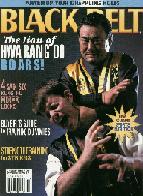
Korean martial history has never been
a simple matter. Many of its twists and turns resulted from the painful Japanese
occupation that lasted from 1910 to 1945, but others stemmed from matters
as mundane as the Korean-English language barrier. Meanwhile, practitioners
and scholars have argued, struggled and fought about the evolution of the
various Korean styles.
The best way to conduct research while operating with a
handicap like that is to interview people who actually participated in the
evolutionary process. Unfortunately, as we advance into the 21st century,
fewer and fewer of those legendary martial artists are still around to testify.
TaeKwondo's Choi Hong-hi, hapkido's Ji Han-jae, kuk soolwon's Suh In-hyuk
and Hwa Rang Do's® Lee Joo Bang are among those living legends who trained
and taught during the pivotal period that immediately followed World War 11
and liberation from Japan.
In this exclusive three-part interview, Black Belt speaks
with Lee joo-bang to clarify some of the aforementioned inaccuracies and misunderstandings
about the evolution of the Korean arts. Lee also offers insights into his
training experiences with a Buddhist monk and hapkido founder Choi Yong -sul,
and he provides a glimpse into the direction his comprehensive fighting art
is taking in the new millennium. -HMJ
BLACK BELT: What are the earliest origins of the Korean
arts?
LEE JOO-BANG: The origins of the Korean fighting arts
[go back] some 5,000 years to the formation of a country called Ko Chosun,
which means "Old Chosun." During those ancient times, people were
focused on sheer surival-maintaining the integrity of their country and defending
themselves against other countries and animals. Because of Korea's peninsular
position between the Chinese mainland and the sea, as well as its rugged topography,
these early Koreans developed strong combative skills. Korea has been invaded
more than any other place in Asia, but we've never been conquered. Even when
the Japanese tried for for over three decades to destroy our culture during
their occupation, they didn't succeed.
BB: Let's skip forward to the Three Kingdoms era. That's
supposedly when the Korean martial arts under went a lot of growth.
LEE: Yes. Over 2,000 years ago, the Three Kingdoms
period began. The Three Kingdoms were Paekche (18 B.C.-661 A.D.), Koguryo
(37 B.C.-668 A.D.) and Silla (57 B.C.-660 A.D.). Each had its own king, army,
subjects and combat methods. Because all three kingdoms were vying for supremacy
on the peninsula, each had to develop a superior fighting system to give its
warriors and soldiers the advantage in battle. The Hwarang culture was born
within the Silla kingdom.
BB: The Hwarang warriors are a famous part of Korean culture.
How were they organized?
LEE: The Hwarang were the heroes of ancient Korean
culture. All children learn about the Hwarang and their heroic deeds in elementary-school
texts. The Silla period lasted from 57 B.C. to 935 A.D. [as the United Silla
dynasty], making it one of the most long-lasting civilizations in history,
and the Hwarang warriors were to Silla's descendants like the knights of medieval
Europe are to many Westerners. They were organized in bands, which were led
by young men of royal descent called Hwarang. They led bands that ranged in
size from 300 to 5,000 young men. These student-disciples were called rang
do, which means "disciples of the Hwarang." The "do"
in this term means "disciple," not the "way" as many martial
arts historians incorrectly think.
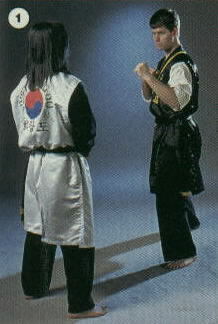

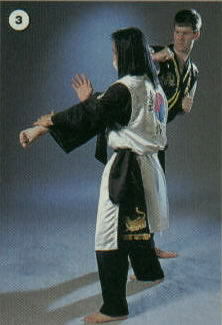
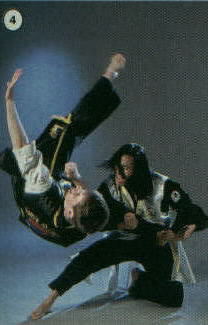
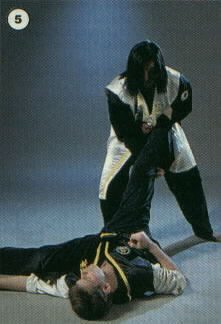
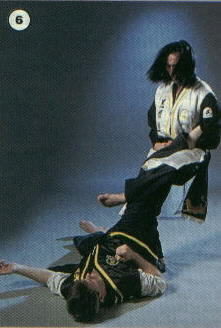
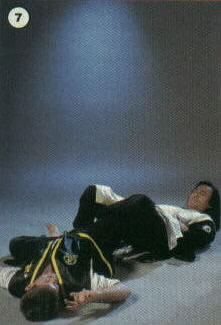
BB: Please explain the term "Hwarang."
LEE: It consists of two Chinese Characters pronounced
in Korean. The first Character, hwa, means"flower." The second
character, rang, is an ancient title of nobility for young men. Bringing
the two characters together has the concept of noble boys who are growing,
blossoming or flowering into a powerful state of manhood. It signifies the
rite of passage that young Silla noblemen had to pass through t achieve their
full potential as adults. I have to make something clear: These Hwarang weren't
just young brawling men who went around fighting armies of other kingdoms.
They spent a great deal of time really working to develop their potential
on all levels: mental, physical and spiritual. Hwarang bands went to live
on mountain or [near a] river, training together and developing strong values
that would serve and soldier or noblemen well: morality, wisdom, emotions,
loyalty, respect, obedience and honor. Their training gave them the means
to understand human nature and develop martial skills. They became the standard
for Silla's military at the time of King Chinhung in 540 A.D. The legendary
Buddhist monk, Won Kwang Beopsa, gave the Hwarang their five codes to govern
their behavior. Because of the Hwarang, The Silla kingdom was able to defeat
Koguryo and Paekche, unifying the peninsula. A version of this Hwarang system
later spread to Japan and gave rise to their shogun-samurai system.
BB: What made up the training of a Hwarang warrior?
LEE: Hwarang training was geared toward developing
a human being who used his maximum potential. You've heard of potential and
kinetic energy, right? Potential energy is like having a rock on a high cliff.
It's useless until someone or something pushes it off the cliff. When it's
falling, the rock has kinetic energy, or energy of movement. It can crush
anything below it. Human beings are the same. Most people have a lot of potential.
They have the ability to achieve great things, but unless an event or force
pushes them in a particular direction, that ability might never be used. Look
at all the obese kids in America who would rather sit around playing video
games [than] do some sort of exercise. They might have the potential to be
great athletes, but they're not using their potential. Nobody's guiding them
in the right direction. Hwarang training provided a direction for people.
The noble youth trained under masters who taught them a vast curriculum. Imagine
knowing someone who in today's terms could do the work of a doctor, poet,
musician, assassin, general, historian, priest and statesmen all rolled into
one. That's basically what the Hwarang were trained for. They spent countless
hours developing fighting skills, which involved every aspect of combat. This
included kicking, punching, joint manipulation, throwing, grappling, internal-energy
training, pressure-point attacks, acrobatics, breakfalling, horsemanship and
108 weapons.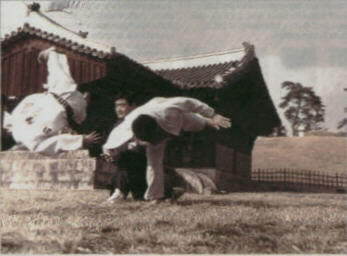
BB: Did they learn anything else?
LEE: They were also well-versed in traditional medicine,
which involved treatment of the gamut of injuries they might cause or sustain
in combat or training. This part of their training included bonesetting, acupressure,
acupuncture, herbal remedies and ki (internal energy) healing. Their meditative
practices gave them mental powers that would be considered incredible by today's
standards. They could withstand extreme pain and perform feats of mind-over-matter.
They were distinguished outside the martial arts as well, developing a style
of poetry know as hyang ga. They were the original Renaissance men.
BB: What happened to the Hwarang after the fall of the
Silla dynasty?
LEE: A Hwarang general named Wanggum assumed control
of the country and renamed it Koryo. It lasted from 936 to 1392. The Hwarang
institution continued but under different titles such as kuk so do and
pung wol do. These titles carried the suffix "do," which
means "disciple." The Korean language has many homophones - words
that sound the same [but have] different meanings. This suffix does not mean
the same thing as the "do" suffix of taekwondo, hapkido or karate-do.
The "do" at the end of those names means "way."
BB: How has that observation affected martial arts research?
LEE: The public needs to understand that if someone
says"hwa rang do," they could very well be talking about then Hwarang
disciples and not the martial art of hwa rang do. Without the benefit of seeing
the Chinese characters for the terms, people often do not understand the Korean
homophones. That's why I tried using the spelling "hwarangdoes to indicate
the Hwarang disciples. As mentioned earlier, the "rang do" were
the soldier-disciples of the Hwarang generals. Thus, they could also be referred
to as Hwarangdo, meaning Hwarang soldiers, followers or disciples. The martial
art of Hwa Rang Do is a completely different term. The later parts of this
interview should clarify the confusion about this once and for all.
BB: Getting back to history....
LEE: In 1392, another Hwarang general, Yi Sung-gye, overthrew Koryo and established the Chosun kingdom, which is also known as the Yi (or Lee) dynasty. It lasted until 1910. It was during the Yi dynasty that the martial arts began their decline in popularity in Korea. Because king Taejong felt that the Hwarang bands were a potential menace to his supremacy and because he knew that Hwarang-trained general overthrew two preceding kings, he declared that all Hwarang bands must fall under the direct control of the central government, stripping the local warlords of independent control. He then established Confucianism as the state religion.
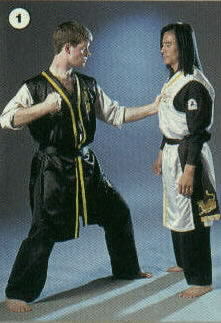
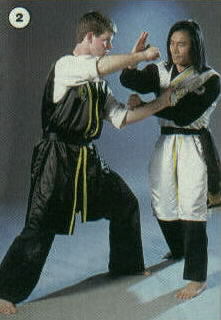
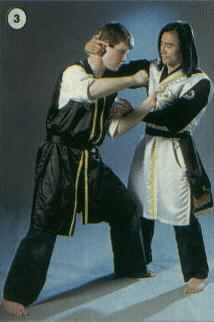
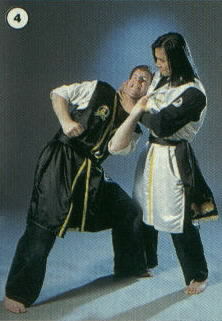
BB: What does the switch to Confucianism have to do with
the growth of the martial arts?
LEE: This is important for all students of traditional
Asian martial arts to understand. Buddhist monks were responsible for a lot
of the development of the arts in East Asia. Just look at the Shaolin Temple
in China. Taoists have their own self defense methods as well. Confucianism
also had a lot to do with the success of the Hwarang institution, but on a
moral level. If you look at Won Kwang Beopsa's Five codes, you'll notice that
some of the rules of conduct have a decidedly Confucian message of filial
piety, loyalty to the king and honor between friends. The last code is the
only one with a decidedly Buddhist injunction against indiscriminate killing.
The fourth code, which allowed no retreat in battle, imbued the Hwarang and
their disciples with amazing courage and strength. However, orthodox Confucianism
places a huge importance on academic learning and views the military with
great disdain. In fact, Confucianism traditionally ranks people in society
by four levels. In descending order of importance, they are scholars, peasants,
artisans and merchants. Soldiers are not even considered part of society.
So you can say that Confucianism really had a lot to with the decline of the
martial arts when it became a state doctrine.
BB: What happened to those Hwarang who wouldn't follow
King Taejong's decree?
LEE: This is when many of the Hwarang fled into the mountains and remote places of Korea. They lived their lives like Wandering hermits, devoting themselves to spiritual study, passing on their vast knowledge of religion, combat skills and healing techniques to only a select few disciples instead of the huge bands that they did before. King Taejong's edict requiring all Hwarang generals to place their soldiers under the direct control of the king meant that the soldier-disciples were no longer ultimately loyal to the Hwarang master who trained and led them, but to the king. This created deep disgust in the heart of many Hwarang generals, causing them to leave society permanently. The Confucian-based government still maintained a combat-skills tradition to protect the country. It even complied the textbook called Mu Yea Do Tong Ji. However, the Hwarang combat skills continued to be passed on only in secret from master to disciple. As a result, the vast body of knowledge that the Hwarang had developed began slowly dying out. These masters would occasionally accept disciples, but whenever a master did not find a student who was worthy of receiving the Hwarang legacy, he simply kept his skills to himself. In many instances, they took their wisdom to the grave. A great deal of traditional Hwarang combat skill began to vanish. This signaled the beginning of the end Korea's golden age.
(To be continued in the October 2000 issue of Black Belt.) Click Here for Part II
About the interviewer: Hyung Min Jung is a Sino-Korean martial arts researcher based in Los Angeles. He can be contacted at hyungmjung@aol.com.